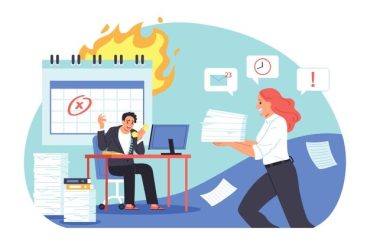 There is no doubt that there is an epidemic of opioid abuse in our world. The definition of epidemic in the Cambridge Dictionary: a particular problem that seriously affects many people at the same time. This particular epidemic is persistent, brutal and killing indiscriminately. But why is this epidemic not being dealt with like other epidemics?
There is no doubt that there is an epidemic of opioid abuse in our world. The definition of epidemic in the Cambridge Dictionary: a particular problem that seriously affects many people at the same time. This particular epidemic is persistent, brutal and killing indiscriminately. But why is this epidemic not being dealt with like other epidemics?
We live in countries with a great deal of knowledge on how to control epidemic diseases. The World Health Organization states, in their steps to control any epidemic, that the reduction/elimination of the infectious agent from the source is critical. The infectious agent in this case appears to be prescription opioid pain pills. While it doesn’t account for all cases of opioid addiction, it now appears that it is the first introduction for the majority of todays heroin addicts, in America in particular, to their opioid addiction. It used to be a case of addiction being progressive, perhaps starting with marijuana and working up to harder drugs. Now kids are taking bags of oxycontin they find at home, to school, and getting hooked almost immediately.
Several factors have contributed to the devastating, current prescription drug abuse problem. Massive increases in the number of prescriptions written and dispensed, social acceptability and the “a pill for every problem” attitude, along with aggressive marketing by pharmaceutical companies all play a part. But has anyone noticed that there is no eliminating or controlling the source of the epidemic? Have our Governments suddenly been struck with a case of amnesia regarding the control of epidemics? Any attempt at controlling the production of these pills or any regulations on who they are prescribed to is certainly not being adhered to. Of course these pills are essential for some people who have serious health issues and require relief from chronic pain. But it appears the source of the epidemic is still aggressively marketing and producing vast amounts of pills without being held accountable.
And then, there is this article written in The Washington Post yesterday, which left me breathless – and not in a good way.
It starts off talking about the death of Prince and how we shouldn’t stigmatize those who are on maintenance programs to deal with their opioid abuse. Fair enough. I agree with that. I’m all up for breaking stigma of any kind and I’m most definitely all for people making choices which are right for them. Statistics say that maintenance programs are the best way to treat opioid addiction. Except many addicts say that’s not true. It’s a reoccurring problem in addiction recovery, that what the experts say and what the addicts experience, are two totally different accounts of the same issue. Especially when it comes to treatment with medication – and more notably when it comes to treating opioid addiction with other opioid drugs. The article then proceeds into a condoning and normalizing of long term prescription drug use as a means to functional living. This type of thinking is at the root of the problem regarding our drug addiction epidemic.
I am an addict, but have never been addicted to opioids. However, in all my years of writing, research and talking to real people about their opioid addiction, I have never once heard someone say that they lived normal functional lives while on maintenance programs.
One woman I spoke to recently, who was using heroin since she was fifteen told me – “I remained controlled by methadone for 23 years because I was told maintenance was the only effective treatment” she said. “I was told I was a ‘lifer’ that I’d never be free of drugs, and methadone is a drug. I had to search and search for a doctor to help me get off maintenance and finally live a normal life. I can’t remember a lot of my years on methadone. I lived like a zombie.”
Loraine, another long term opioid maintenance patient said – “Methadone kept me sick. I was barely functional on maintenance programs and I didn’t want to live that way anymore.” And there are dozens of stories like these that I’ve come across.
Yet The Washington Post article states that “tolerance and steady dosing mean that patients are not impaired and can drive, care for families and work. What remains is a physical need for the substance to avoid withdrawal.”
Astonishingly the article goes on to equate our dependence on oxygen, food and water being necessary and natural and not harmful, to a dependence on anything not being harmful! And if the consequences of physical dependence are positive, it’s not addiction. I searched for some testimonies of addicts who had gone through some maintenance treatment to get a balanced view of long term maintenance programs. Perhaps I’ve only heard one side of the story and people are living normal, healthy, productive lives on maintenance programs?
However, what I found was many stories of trying to kick methadone, but nothing about living a successful life. I did however find this – The Methadone Perspective from 25 Recovering Addicts – which didn’t change my initial point of view. One account says “I’ve known the people who have been on Methadone for years and years, and the best way I could describe it, is they’ve been given a chemical lobotomy. It’s just another drug that was introduced by the Federal Government to protect the public from addict crime – not to protect the addict from his/her disease.” Jeff B. – Clean 15 years.
Studies have shown that Long-term methadone treatment can affect nerve cells in the brain with a sharp decrease in key signaling molecules, important in learning and memory. Maryland Addiction Recovery Center talks about Suboxone, another drug commonly used for long term maintenance, as an excellent medication for detox. However, it also states that Suboxone does not offer any actual treatment and clearly does not offer a solution for overcoming addiction. Patients complain of horrific bouts of depression. Many claim that the withdrawal symptoms of Suboxone, unlike the intense withdrawal of heroin or Oxycontin, comes in waves and can last for weeks or months.
And to top it all off we have Dr. David Kessler on CBS NEWS saying “FDA has responsibility, the pharmaceutical companies have responsibility, physicians have responsibility. We didn’t see these drugs for what they truly are.”
So all these highly educated experts forgot the mess created as far back as the 1800’s, when they tried to treat  alcoholism with morphine and tried to treat the subsequent addiction to morphine with heroin? Years of experience and evidence that show any kind of opioid drug is highly addictive, whether it’s prescribed or not, counts for nothing? Scientists, with the latest technology couldn’t see the almost identical chemical structure of heroin and opioid pills? They didn’t see these drugs for what they truly are? Give me a break!
alcoholism with morphine and tried to treat the subsequent addiction to morphine with heroin? Years of experience and evidence that show any kind of opioid drug is highly addictive, whether it’s prescribed or not, counts for nothing? Scientists, with the latest technology couldn’t see the almost identical chemical structure of heroin and opioid pills? They didn’t see these drugs for what they truly are? Give me a break!
In an effort to combat the growing epidemic of prescription drug and heroin abuse, the FBI and DEA have released “Chasing the Dragon: The Life of an Opiate Addict,” a documentary aimed at educating students and young adults about the dangers of addiction. It’s something that everyone needs to watch – and actually listen to what the people are telling us.
It’s about time that we all got a reality check regarding the source of this crisis and the fact of the matter is that human lives have no value in the eyes of the corporate world. We are just another dispensable commodity to help rake in cash. I am completely aware that addiction is a very complex disease and there are many factors that influence it’s progression. I’ve dealt with addiction all my life and the recovery from it takes phenomenal work. But why are the same treatments being administered to addicts over and over again despite the devastating effects. Why is legal drug dealing seen as a medicinal practice? And why are we not listening to the addicts? I believe that it was Albert Einstein who said repeating the same behavior but expecting different results is a sign of insanity!







5 Comments
Powerful and great research and references. Thank you
You are so right. In Group Therapy sessions I do with addicts in treatment for opiates all say the same thing; Suboxone and other maintenance drugs are just as addicting and difficult to quit. Why isn’t the obvious solution tried? The profits received from drug prescription sales and the illicit drug trade. Great research and article, Nicola.
I am still not sure what the message was in the article. Having been on methadone for 15 years in recovery now 33 but OLDER! I went 25 years without an aspirin and had a back procedure that got me back on pain meds, its aka chronic pain. Every day I feel stigmatized and even more judged because I live in fear that the government will make my doc take me off a low dose of pain med that makes it bearable to function.
I know addiction I lived it, I cried the day I filled the first prescription for opioid med. after a botched back procedure. With spinal stenosis, DDD and arthritis I was now crippled or it would be a year of PT before I could walk again. Meetings was I thinking of meetings? I was in survival mode. I had shingles no pain med, many procedures in recovery no pain med. Now older, after a bout with bleeding ulcers from NSAIDS I was in PAIN. Funny when we are in excruciating pain things change. I blamed the doc, but PAIN no one wants pain. I think the bigger picture is why are we in so much pain? What is the answer to botched surgeries, and tiring to have some type of life. I know both sides but its not fair to stigmatize older people who are in chronic pain or to put them in a different class of meds that don’t work because of people abusing meds.
Addiction is nothing new, its that it has hit suburbia. I had no problem getting heroin when I was younger. We don’t’ want to win the “war on drugs” this has been going on for over 50 years. Its meant to pump up the stock of drugs like HARVONI that nearly killed me. My doc should have cared as much about me then the kick back from the big pharma at $100,000 per treatment that I had to stop due to bad sides. Its a game no one wants to fix this problem. We only want to make the wrong people suffer needlessly.
Wow! I have the same problems. Two spinal fusion and I’m only 54 years old. At the time of my first surgery I was only 43 years old. I have had a very long and miserable time trying to get clean. The doctors didn’t tell me to pack my bags for a trip to Hell.
I couldn’t agree with you more, Nicola. I am and have been an alcoholic for 30 years. I’ve been in and out of recovery for all of that time. In 2014 and with two years of sobriety from alcohol I decided to try those opioids that everyone was raving about. And, surely “I” wouldn’t get hooked. I’ve taken every pull there is (except those) and although I never took anything as prescribed, when they were gone, they were gone. That’s it. Game over until sometime in the future when the opportunity arises. Not so with opioids. I quickly spiraled to “hell”, and in one year spent over $30,000. I had always believed that alcohol was THE worst drug to withdrawal from but I was very wrong. In one year I was hospitalized more than six times mostly because I knew that they would give me something for my pain. I had diarrhea and vomiting and felt so dreadful. And, I drank to help with the withdrawal symptoms. It didn’t work. In May of 2015 my husband nurses me back to health and I have promised myself, Nature and all of the world’s Good, that I would never take an opiate pill again. I made it through the horror of withdrawals, the pain, wanting to die, the remorse and I began my AA meetings with all the energy and determination that I put into looking for a pill. June 2, 2016 I will have one year of TOTAL sobriety. The Subs and methadone that the industry uses to prolong the addicts misery at the addicts expense is heartbreaking. One week / month of love and care from someone who truly understands, who will nurse you through your pain until you can see the light of day. And then and most importantly, a daily regimen of meetings. The urge WILL come back and a strong support system is an absolute must. I hope all of the readers of your article also watches “Chasing the Dragon”. I did and it is so true and helpful in who we are and what WILL happen. Thank you so much for your research and efforts in recovery.